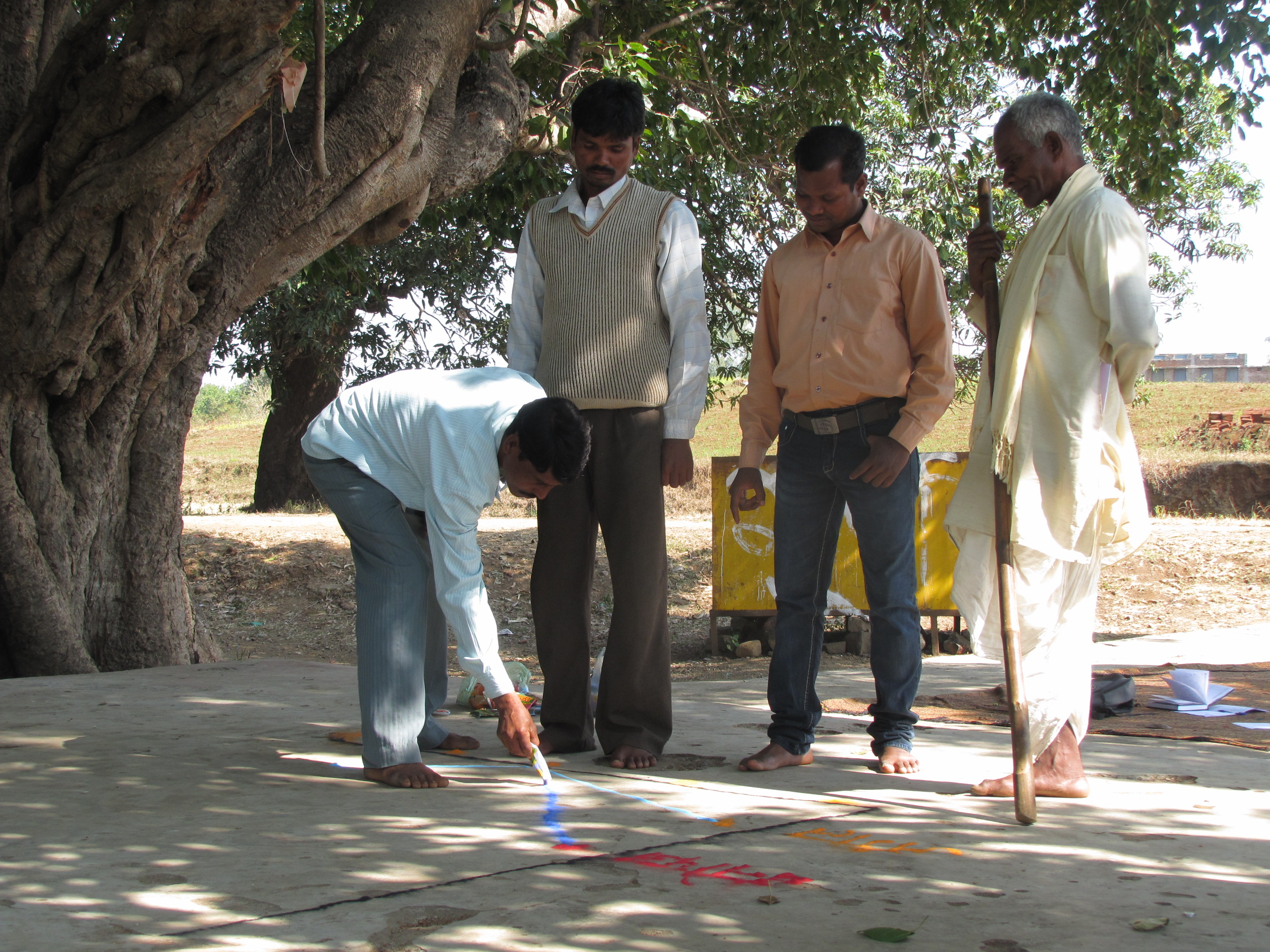

The analysis aimed at studying the vulnerability of tribal communities located in the upper catchments of Gaur river in Niwas block of Mandla district towards erratic rainfall. The assessment is also relevant for the entire Mahakuahsal region.
In order to understand exposure, sensitivity and adaptive capacity of the region, the team has taken a people-centric approach combining field work for the collection of household and village institution data with data available under public domain. The latter comprised finding and analyzing existing meteorological data, other data from government agencies and conducting interviews with higher authorities. The field methods applied include PRA, ecological baseline protocols, household economic analysis and farmer questionnaires.
The results were used to design and implement activities that specifically work on counteracting the impact of erratic rainfall, drought conditions, containing soil erosion and strengthening village institutions for building conservation ethic, in order to control the forest degradation and fragmentation. Building models to interlink farm and demonstrations on commons for reducing soil erosion.
Guidance and support on carrying out local level vulnerability assessment including a a template for the VA to be filled out by the implementing agency FES was provided by CCA RAI.
Involvement of both men and women in identifying climate change challenges and vulnerability factors and involving them in data collection is crucial.
The assessment showed that adaptation strategies need to be designed with a community-oriented approach so that the villages become more self-dependent.
Participatory exercises such as PRA (Participatory Rural Appraisal) are very effective in generating essential information on all aspects of a community's vulnerability to climate change.
Climate data are often not available at the local level and data from a higher spatial aggregation must be used for validation/ triangulation.
A clear distinction between sources of information is necessary to know where the line between community perception and scientific evidence can be drawn.
Local level vulnerability assessments can also provide the starting point for developing monitoring and evaluation (M&E) frameworks for local level adaptation projects. Accordingly, an M&E framework should contain indicators based on the components of climate change vulnerability.